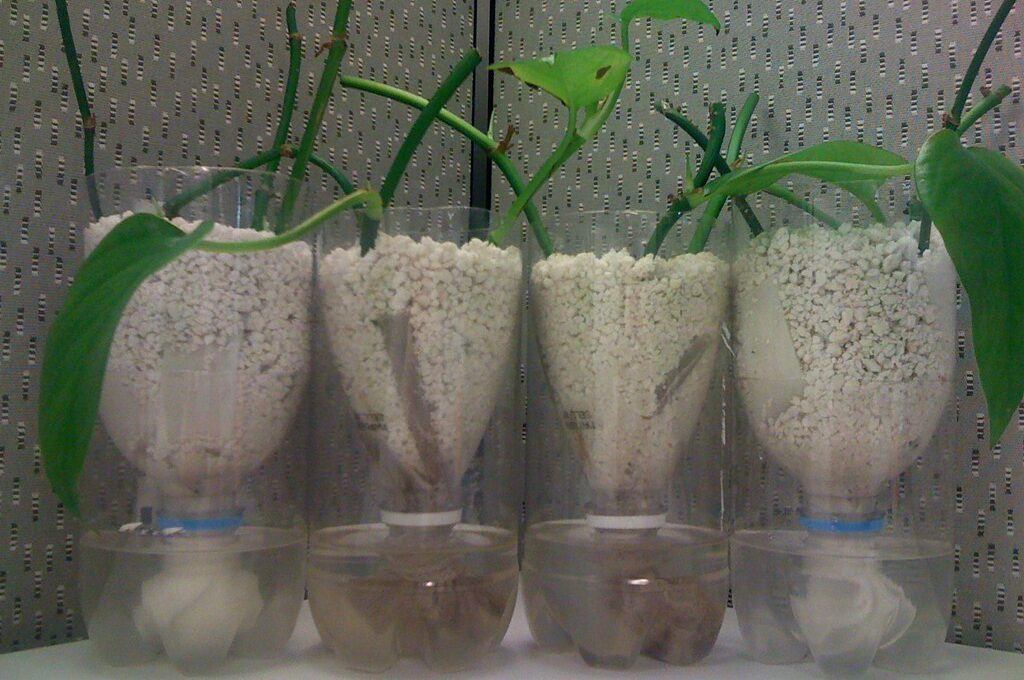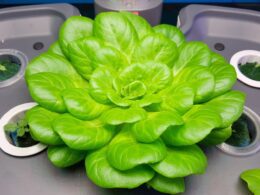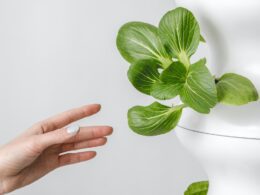Are you new to hydroponic gardening and wondering how high the water should be in your system? The water level is a crucial factor that affects the health and growth of your plants. If the water level is too low or too high, it can lead to nutrient deficiencies, root rot, and other problems that can harm your plants. Therefore, it’s essential to understand the ideal water level for your hydroponic system and how to maintain it properly.
In this article, we’ll explore the importance of water level in hydroponic systems, the factors that determine the ideal water level, and the best practices for measuring and adjusting the water level. We’ll also discuss common water level problems and solutions to help you troubleshoot any issues that may arise.
By the end of this article, you’ll have a clear understanding of how to maintain the optimal water level in your hydroponic system and ensure the health and safety of your plants.
Understanding the Importance of Water Level in Hydroponic Systems
You need to imagine your hydroponic garden as a calm, crystal-clear lake, with the water level perfectly balanced to nourish your plants and keep them thriving.
The water level is a critical factor in hydroponic systems, as it affects water circulation and plant growth. When the water level is too high, the roots of your plants may become waterlogged, leading to root rot and eventually, death.
On the other hand, if the water level is too low, your plants may not receive enough water and nutrients, causing stunted growth and poor yields. Therefore, it’s essential to maintain the water level at the right height.
One way to do this is by using a water level indicator, which will help you monitor the water level and adjust it as necessary.
In summary, the water level in your hydroponic system is crucial for the healthy growth of your plants. Maintaining the right water level will ensure proper water circulation and nutrient absorption, which are essential for optimal plant growth. So, be sure to keep a close eye on your water levels and adjust them as needed to keep your hydroponic garden flourishing.
Factors that Determine the Ideal Water Level
Now let’s talk about what determines the perfect level of H2O for your plants to thrive in hydroponic systems. The water level is a critical factor that can make or break your hydroponic garden. Here are five factors that determine the ideal water level for your hydroponic system:
-
Plant type: Different plants have different water requirements. Some plants prefer a lower water level, while others need a higher water level to thrive.
-
Stage of growth: The water level should be adjusted according to the growth stage of your plants. For example, seedlings require a shallow water level, while mature plants need a deeper water level.
-
Temperature: The temperature of your hydroponic system affects the water level. High temperatures can cause water to evaporate quickly, while low temperatures can slow down plant growth.
-
Nutrient solution: The nutrient solution in your hydroponic system affects the water level. The concentration of nutrients can affect the water level, and some plants may need more or less of certain nutrients to grow properly.
-
Type of hydroponic system: The type of hydroponic system you’re using can affect the water level. Some systems require a constant water level, while others have a fluctuating water level.
Keeping these factors in mind, you can adjust the water level in your hydroponic system to ensure optimal plant growth. Make sure to monitor the water level regularly and adjust it as needed to keep your plants healthy.
Remember that the ideal water level for your hydroponic system isn’t a one-size-fits-all solution. It depends on many factors, such as plant type, growth stage, temperature, nutrient solution, and type of hydroponic system. By understanding these factors and adjusting the water level accordingly, you can create an optimal growing environment for your plants. So, keep experimenting and learning, and don’t be afraid to make adjustments as you go along. Happy growing!
Measuring and Adjusting Water Levels
When it comes to measuring and adjusting water levels in your hydroponic system, there are a few key tools and techniques to keep in mind.
First, you’ll need a reliable way to measure the water level, such as a water level indicator or a ruler.
From there, you can adjust the water level by adding or removing water, or by adjusting the flow rate of your system’s pump.
With a little practice and attention to detail, you can easily maintain the ideal water level for your hydroponic plants.
Tools for Measuring Water Levels
Take advantage of tools available to measure the levels in your system. These tools can make it easier for you to maintain the water levels in your hydroponic system and optimize its performance. Here are some of the tools that you should consider using:
-
Water Level Indicator – A water level indicator is a simple and effective tool that can help you determine the water level in your hydroponic system. It can help you avoid overfilling or underfilling the system, which can lead to problems with plant growth.
-
pH Meter – A pH meter is another essential tool for measuring the water levels in your hydroponic system. It can help you determine the acidity or alkalinity of the water, which is crucial for plant growth.
-
TDS Meter – A TDS meter measures the total dissolved solids in the water. This tool can help you determine the nutrient levels in your hydroponic system, which is important for plant growth.
-
EC Meter – An EC meter measures the electrical conductivity of the water. This tool can help you determine the nutrient levels in your hydroponic system, which is important for plant growth.
By using these tools, you can ensure that your hydroponic system is functioning optimally and that your plants are getting the nutrients they need to grow healthy and strong.
Techniques for Adjusting Water Levels
You can easily adjust the water levels in your setup by implementing these simple techniques. First, make sure you have a clear understanding of the ideal water level for your specific hydroponic system. This will depend on the type of plants you’re growing and the type of hydroponic system you’re using.
Once you know the ideal water level, you can use a water level maintenance tool to monitor and adjust it as needed. If you notice the water level is too high, try draining some of the water out of the system until it reaches the ideal level. On the other hand, if the water level is too low, add more water until it reaches the ideal level.
If you still have trouble maintaining the ideal water level, there may be an issue with your hydroponic system that requires troubleshooting techniques. By regularly monitoring and adjusting the water levels in your hydroponic system, you can ensure your plants have the best possible growing environment.
Common Water Level Problems and Solutions
If you’ve been experiencing issues with the water levels in your hydroponic system, don’t worry, you’re not alone. High water levels can lead to root rot, and low water levels can cause plants to dry out. Uneven water levels can also lead to inconsistent growth.
In this section, we’ll discuss common water level problems and solutions to help you maintain the perfect balance for optimal plant growth.
High Water Levels
You’ll want to keep an eye on the level of your nutrient solution to ensure your plants stay healthy and thriving. If the water level is too high, it can cause several problems for your hydroponic system.
Here are three things to keep in mind if you’re dealing with high water levels:
-
Oxygen deprivation: When the water level is too high, it can block the flow of oxygen to the roots. This can cause your plants to drown and eventually die.
-
Nutrient imbalance: High water levels can also lead to nutrient imbalances. The excess water can dilute the nutrient solution, making it difficult for your plants to absorb the nutrients they need.
-
Disease and pests: Finally, high water levels can create a breeding ground for disease and pests. The excess moisture can provide a perfect environment for harmful bacteria, fungus, and insects to grow and thrive.
To avoid these problems, make sure you monitor and adjust the water level regularly. You may also want to invest in a system that automatically regulates the water level for you. By keeping the water level in check, you can ensure that your plants stay healthy and thriving in your hydroponic system.
Low Water Levels
Maintaining proper water levels is crucial for the health and growth of your plants in a hydroponic setup. When the water levels are too low, your plants will not receive the necessary nutrients and oxygen they need to thrive. Monitoring fluctuations in water levels is important to catch low water levels early on and troubleshoot solutions before it affects your plant growth.
To ensure your plants receive enough water, it is recommended to keep the water level between 1-2 inches below the net pot. If the water level drops below this range, you can add more water to the reservoir or adjust the float valve if your system has one. If the water level consistently drops too low, it may indicate a leak in your system. Troubleshoot by checking for leaks in tubing or connections and replacing any damaged parts. By monitoring water levels and troubleshooting any issues, you can ensure your plants receive the proper amount of water for optimal growth in your hydroponic system.
Uneven Water Levels
Uneven water levels can wreak havoc on your plants, causing stress and hindering growth. To ensure your hydroponic system is functioning optimally, it’s important to understand the causes of uneven water levels and how to prevent or troubleshoot them.
Here are some tips to help you maintain an even water level in your hydroponic system:
-
Check your water pump: A malfunctioning water pump can cause uneven water levels. Make sure your pump is working properly and that the water is circulating evenly throughout the system.
-
Monitor the water level: Keep an eye on the water level in your system and adjust as needed. If the water level drops too low, it can cause stress on your plants, while too high of a water level can drown the roots.
-
Use a water level indicator: Consider using a water level indicator to ensure your water levels are consistently even. This can be particularly helpful if you have a large hydroponic system.
By taking these preventative measures and troubleshooting tips, you can ensure that your hydroponic system is functioning properly and that your plants are receiving the optimal amount of water for healthy growth.
Best Practices for Maintaining the Ideal Water Level
The ideal level for water in a hydroponic setup can be maintained with these best practices. First, use a water level indicator to monitor and maintain the water level. This simple tool helps prevent water level fluctuations and ensures that your plants receive a consistent amount of water. Second, regularly check the water level and adjust as necessary. This will help prevent any unexpected changes in the water level that could harm your plants. Third, use a high-quality water pump and filtration system to maintain the water quality and prevent any blockages that could disrupt the water flow.
To help you understand the importance of maintaining the ideal water level, here is a table that shows the effects of water level fluctuations on plant growth. As you can see, even a small change in the water level can have a significant impact on your plants. By following these best practices, you can provide a safe and stable environment for your hydroponic plants to thrive in.
| Water Level | Effect on Plant Growth |
|---|---|
| Too low | Stunted growth |
| Too high | Root rot |
| Fluctuating | Inconsistent growth |
By maintaining the ideal water level, you are ensuring that your plants have the best possible chance of growing strong and healthy. Remember to use a water level indicator, regularly check and adjust the water level, and use a high-quality pump and filtration system. With these best practices in place, you can enjoy a successful and rewarding hydroponic gardening experience.
Frequently Asked Questions
What are some common mistakes people make when adjusting water levels in a hydroponic system?
When it comes to adjusting water levels in a hydroponic system, there are some common mistakes that people often make. One mistake is overfilling the system, which can lead to root rot and other plant health issues.
Another mistake is not monitoring the water levels regularly, which can lead to fluctuations and imbalances in the nutrient solution.
To avoid these common mistakes, it’s important to troubleshoot solutions such as regularly checking and adjusting the water levels to maintain optimal levels for plant health. By doing so, you can ensure that your hydroponic system operates smoothly and your plants thrive.
How often should the water level be checked and adjusted in a hydroponic system?
Water level monitoring is an essential aspect of hydroponic gardening that can’t be overlooked. To prevent nutrient burn and ensure the health of your plants, it’s crucial to check and adjust the water level in your hydroponic system regularly.
Depending on the size of your system and the type of plants you’re growing, you may need to check the water level several times a day or every few days. It’s important to keep a close eye on the water level and make adjustments as needed to ensure that your plants are receiving the right amount of water and nutrients.
With proper water level monitoring, you can create a safe and healthy environment for your plants to thrive.
Is it possible to overfill a hydroponic system with water? If so, what are the consequences?
Water level management is crucial for maintaining hydroponic system efficiency, but overfilling your system with water can be a recipe for disaster. If the water level is too high, it can lead to root rot, mold, and other diseases that can harm your plants.
Additionally, overfilling can cause damage to your equipment, leading to costly repairs or replacements. To avoid these consequences, it’s important to regularly monitor the water level in your system and adjust it accordingly.
Always follow the manufacturer’s recommended water level and be sure to use a reliable water level indicator to ensure that you’re not overfilling your system. With proper water level management, you can ensure that your hydroponic system runs smoothly and your plants thrive.
Can the water level affect the pH balance of a hydroponic system? If so, how?
Water level impact is closely related to the PH balance correlation in hydroponic systems. Maintaining optimal water levels is crucial to ensure a healthy and productive crop yield. If the water level is too low, the roots may dry out, leading to stunted growth or plant death.
On the other hand, if the water level is too high, it can cause oxygen deprivation, root rot, and other issues that negatively impact the PH balance. Therefore, it’s essential to regularly monitor and adjust the water level to maintain a healthy and stable PH balance.
By doing so, you can ensure your plants thrive and produce a bountiful harvest in your hydroponic system.
Are there any specific types of plants that require a higher or lower water level in a hydroponic system?
Plants have different water preferences when it comes to hydroponics. Some require a higher water level, while others prefer it lower. This is because the water level affects nutrient absorption in hydroponics.
For example, lettuce and other leafy greens prefer a lower water level, while tomatoes and other fruiting plants require a higher water level. It’s important to research the specific water preferences for each plant you plan on growing in your hydroponic system to ensure optimal growth and yield.
Providing the right water level for your plants will promote healthy growth and prevent nutrient deficiencies, keeping your hydroponic garden thriving.
Conclusion
So, now you know how important it is to maintain the right water level in your hydroponic system. Remember that factors like plant growth stage, container size, and type of hydroponic system all play a role in determining the ideal water level.
Measuring and adjusting the water level regularly, as well as keeping an eye out for common problems like algae growth and pH imbalances, will help ensure your plants have the best chance of thriving. By following these best practices and staying attentive to your hydroponic system’s water level, you’ll be well on your way to a successful harvest.
Happy growing!








